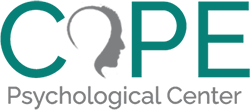Mood Disorders: Understanding and Treating
Mood is defined as a persistent and pervasive internal feeling tone that significantly influences various aspects of an individual’s behavior in the external world. Mood disorders, such as bipolar disorder, cyclothymia, major depressive disorder, disruptive mood dysregulation disorder, persistent depressive disorder, and premenstrual dysphoric disorder, are characterized by significant disruptions in emotions, ranging from severe lows (depression) to highs (hypomania or mania). These psychiatric disorders contribute to increased morbidity and mortality. This discussion involves the role of the interprofessional team in diagnosing and treating mood disorders.
Mood Disorders
Etiology
The amygdala and orbitofrontal cortex, responsible for regulating emotions, exhibit abnormalities in individuals with mood disorders. Biological factors involve neurotransmitters such as serotonin, norepinephrine, and dopamine, while medical conditions and certain drugs can contribute to mood disorders. Genetic factors, hormonal imbalances, psychosocial factors, and neuroimmunological factors also play roles in the etiology of mood disorders.
Epidemiology
Major depression has a lifetime prevalence of 5% to 17%, with higher rates in women. Mood disorders are common in children and adolescents, with 15% suffering from any mood disorder. The median age of onset of major depressive disorder is 32 years. Bipolar disorder subtypes have varying prevalence rates.
Pathophysiology
Chronic stress, impacting the hypothalamic-pituitary-adrenal (HPA) axis, contributes to the pathophysiology of mood disorders. Neuronal plasticity, genetic vulnerability, and social support systems influence the development of depression and mania. Symptoms include changes in sleep, appetite, psychomotor activity, and neurocognitive functions.
Treatment / Management
Timely diagnosis and treatment are crucial for reducing morbidity and mortality. Pharmacotherapy options for bipolar disorder include mood stabilizers like lithium and anticonvulsants. Unipolar depression is treated with selective serotonin reuptake inhibitors (SSRIs), serotonin-norepinephrine reuptake inhibitors (SNRIs), atypical antidepressants, tricyclic antidepressants (TCAs), serotonin modulators, and monoamine oxidase inhibitors (MAOIs).
Psychotherapy, brain stimulation therapy (rTMS, electroconvulsive therapy), and healthy lifestyles, including diet, exercise, and smoking cessation, are integral components of mood disorder management.
Differential Diagnosis
In accordance with the Diagnostic and Statistical Manual of Mental Disorders, Fifth Edition (DSM-5), the following represents the potential differential diagnoses for mood disorders.
Generalized anxiety disorder, panic disorder, posttraumatic stress disorder (PTSD), or other anxiety disorders
A thorough history is necessary to distinguish generalized anxiety disorder from a mood disorder, as anxious ruminations may be misconstrued as racing thoughts. Actions aimed at reducing anxiety might be interpreted as aggressive behavior observed in a manic episode. Similarly, symptoms of PTSD, including anger and aggression, must be differentiated from bipolar disorder.
Substance/medication-induced mood disorder
Symptoms resembling mania/depression may arise in substance use disorders, necessitating differentiation. A primary diagnosis of a mood disorder must be established based on symptoms persisting beyond substance use cessation. Certain medications (such as steroids and alpha-interferon) can induce manic or depressive symptoms, requiring careful history-taking to distinguish from mood disorders.
Attention-deficit/hyperactivity disorder (ADHD)
Common in adolescents and children, ADHD can be mistaken for bipolar disorder. Symptoms like increased psychomotor activity, difficulty interrupting speech, distractibility, and decreased need for sleep overlap with manic episode symptoms. The episodic nature of bipolar disorder can aid in distinguishing it from ADHD. Personality disorder: Symptoms of certain personality disorders, like borderline personality disorder, may significantly overlap with bipolar disorders. Labile mood, impulsivity, delusions, and hallucinations are common in both disorders, but bipolar disorder requires episodic occurrences with a marked increase over baseline.
Schizophrenia spectrum and other related psychotic disorders
Bipolar disorder and severe depression with psychotic symptoms must be differentiated from psychotic disorders. Schizophrenia and related disorders involve intervals of psychotic symptoms, with delusions and hallucinations occurring independently of mood symptoms. Considerations include concurrent symptoms, symptom chronology, and longitudinal course. Delirium, catatonia, and acute anxiety: Distinguishing symptoms of mania from hyperactive delirium, excited catatonia, and impulsivity/aggression associated with acute anxiety is crucial.
Complications
There is a potential association between longer illness duration and worse outcomes in mood disorders, particularly regarding self-harm/suicide. Late diagnosis of bipolar disorder, which can extend up to 10 years, leads to various forms of substance abuse. Anxiety disorder is a frequent comorbidity associated with mood disorders. Attention deficit-hyperactivity disorder, oppositional defiant disorder, and conduct disorders are also common. Mood disorders can cause substantial functional impairment, affecting work and emotional relationships with family and friends.
Deterrence and Patient Education
Mood disorders are prevalent psychiatric conditions with high morbidity and mortality. Patient education regarding symptoms and timely treatment is imperative for recovery.
Psychoeducation is crucial for treatment adherence, emphasizing medication and psychotherapy engagement to reduce relapse risk. At discharge, patients and caregivers should be educated about early warning signs of mood disorder relapse. If symptoms like decreased need for sleep, increased talkativeness, racing thoughts, and elevated energy arise, immediate psychiatric consultation is necessary. Recovery from mania and depression requires strict adherence to medication and therapy, emphasizing regular follow-ups.
Enhancing Healthcare Team Outcomes
Optimal treatment for mood disorders necessitates collaboration among various healthcare professionals, including family physicians, nurses, psychiatrists, psychologists, and social workers, along with strong cooperation from family and support groups, forming an integrated care team. Family physicians often serve as the initial contact for patients, playing a key role in understanding symptom severity, making diagnoses, and determining the need for psychiatric referrals in cases of moderate to severe symptoms or active suicidal ideation.
A mental health case manager (mental health care nurse) is essential, particularly in community mental health settings, to coordinate care for severe mood disorders. Regular communication is crucial, and all healthcare providers involved in patient management need to be informed of the current treatment plan, especially during psychiatric admissions.
Therapists contribute significantly to decision-making and treatment planning, but optimal outcomes arise when various professionals collaborate effectively. Positive responses require regular communication among psychiatrists, family physicians, social workers, nurses, case managers, and pharmacists, both in in-patient and outpatient settings.
We Can Help
Contact COPE Psychological Center for comprehensive and compassionate care. Our team of experienced professionals collaborates to provide personalized treatment plans. If you or a loved one is struggling with mood disorders, take the first step towards healing and contact us for support and guidance. Your mental health matters.

